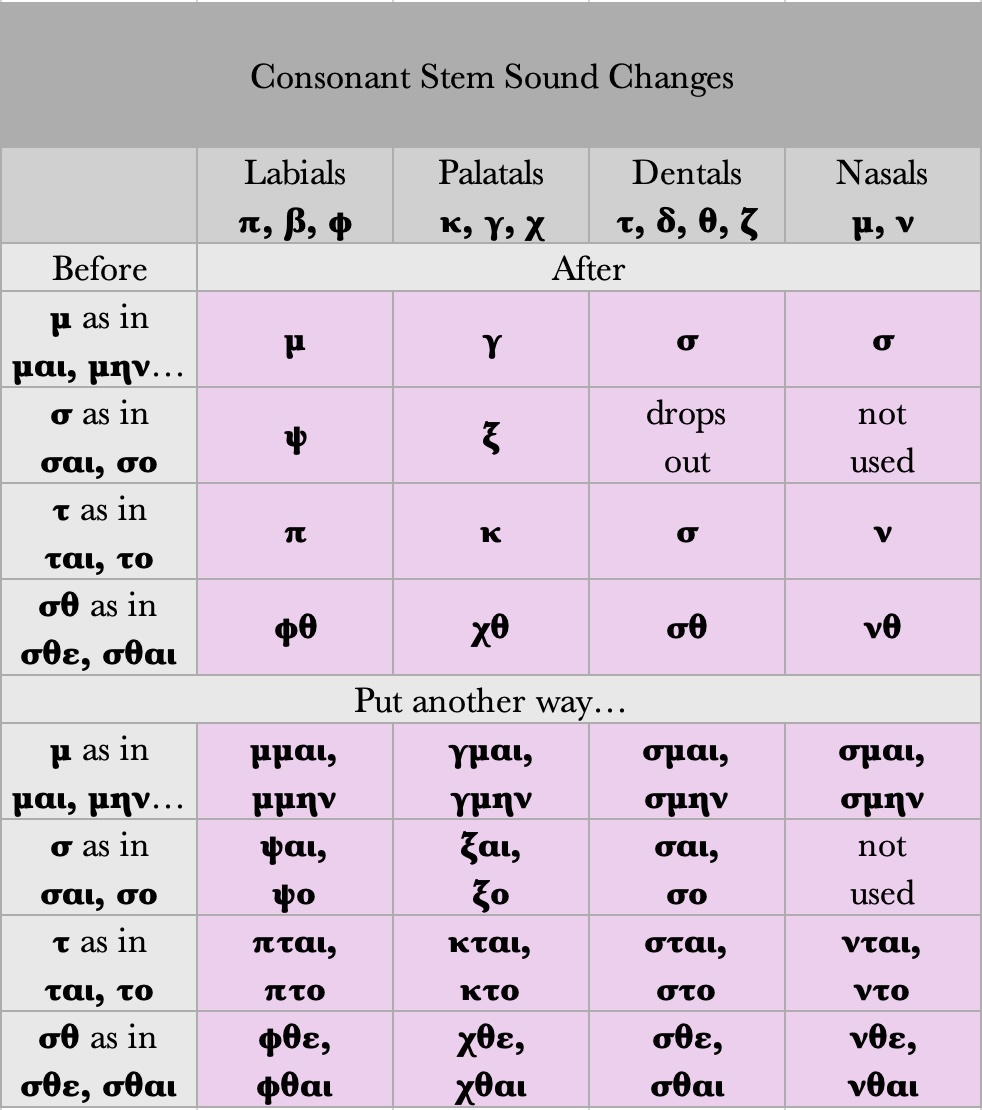43.4 For now, let us review the SOUND CHANGES that do regularly occur when PRIMARY or SECONDARY MIDDLE ENDINGS meet consonant stems, i.e., stems that end in labials, palatals, dentals, or nasals. (Note: A handout of the following chart is available for download under the "Printables" tab to the right).
43.5 As you review these charts, note the following:
- –σ– drops out when between two consonants, e.g. φσθε → φθε (S 715, G 55).
- Stems ending in a NASAL (ν, μ) do not allow a form that has a personal ending beginning with σ (e.g. σαι, σο). For example, the 2nd person singular of the PERFECT MIDDLE of φαίνω, φανῶ, ἔφηνα (stem: φαν-) should be *πέ-φαν-σαι. Though perhaps acceptable to an English speaker, Greeks avoided saying this form, and substituted a PERIPHRASTIC form instead (S 707a).
- (*πέ-φαν-σαι →) πεφασμένος εἶ
- The MIDDLE voice 3rd person plural endings (-νται and –ντο) do not appear on the chart. This is because Greeks ALWAYS rendered the middle 3rd person plural as a PERIPHRASTIC. (Again, we review how to form PERIPHRASTICS later in the lesson.)
- Read More
-
A number of 3rd declension neuter nouns were created by adding –μα –ματος endings to verb stems to denote the result of an action (S 841.2). Many of these nouns exhibit the sound changes reflected in the above charts. For example:
- γράφω → γράμμα, γράμματος, τό
- that which is drawn; line
- παραδείκνυμι → παράδειγμα, παραδείγματος, τό
- that which is shown; pattern; model
- δοκέω → δόγμα, δόγματος, τό
- that which seems to one; opinion; belief
- μιαίνω → μίασμα, μιάσματος, τό
- that which defiles; stain; pollution
- φαίνω → φάσμα, φάσματος, τό
- that which appears; apparition; phantom
- γράφω → γράμμα, γράμματος, τό
Charts JPG

Printables

